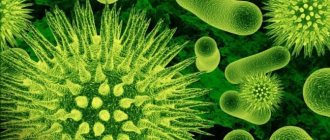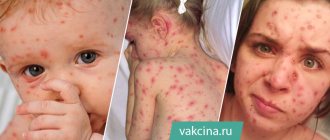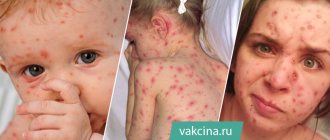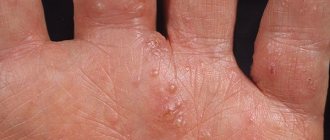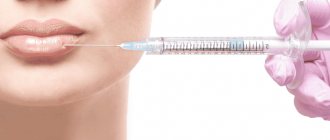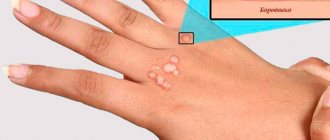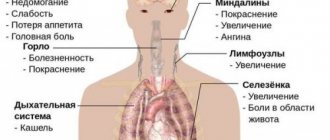Is it possible to wash if you have hives?
Many people, seeing red rashes on a person, begin to avoid him. This reaction is very understandable, because not everyone knows whether urticaria is contagious and what exactly causes it to appear.
Urticaria is a skin disease, dermatitis is often of allergic origin. This disease is characterized by itchy red or pink rashes that protrude slightly above the skin level. The rash can spread throughout the body, in the form of small or extensive rashes.
Allergic urticaria
The child is prescribed a hypoallergenic diet according to A.D.
Ado. Food allergens to which the body reacts and histamine-releasing products should be excluded from the diet. The medications prescribed depend on how severe the child's hives are. In case of exacerbation of severe urticaria, take some of the following medications (as prescribed by a doctor):
- clemastine
— chloropyramine 2.5% (course 5-7 days)
- systemic glucocorticosteroids (if the above drugs were ineffective): dexamethasone, prednisolone
- according to indications, hemodez 200-400 ml intravenously, 3-4 injections
- fexofenadine (Telfast)
- loratadine (Claritin) once a day
- ketotifen
For the treatment of exacerbations of moderate urticaria, take:
— clemastine (tavegil) 0.1%
— chloropyramine (suprastin) 2.5%
— systemic glucocorticosteroids (according to indications)
- fexofenadine
- loratadine
- ketotifen (zaditen) 0.001 g 2 times a day
In case of mild exacerbations of urticaria, elimination measures are carried out. Glucocorticosteroids are not used. Then fexofenadine (Telfast) and loratadine are used once a day. Course – 1 month. Ketotifen is taken for a course of 3 months.
Treatment in a hospital is 18-20 days. If necessary, SIT and a course of histaglobulin are carried out in an allergy hospital or office.
Adviсe
A bath for allergies will be more effective if the following recommendations are followed:
· to increase sweating, it is necessary to cover the skin with a thin layer of table salt;
· after leaving the steam room, crushed oatmeal mixed with sour cream (for dry skin) or water (for oily skin) should be applied to the skin;
· It is necessary to do a honey massage if you are not allergic to honey. Thanks to this, the body will be ready for spring and summer flowering;
· You should use a juniper broom.
Idiopathic urticaria
To treat this type of urticaria, the child must follow a hypoallergenic diet according to A.D. Ado. The same medications are recommended as for the treatment of exacerbations of moderate urticaria. In case of torpidity, the child may be prescribed long-acting glucocorticosteroids for a course of 2-3 weeks to symptomatic therapy.
Detoxification therapy involves the administration of hemodez 400 mg and the intake of sorbents. The child is prescribed digestive enzymes, for example, mezim or festal, but not in all cases. Based on the identified pathology, the child is prescribed symptomatic treatment: antifungal, antibacterial, etc.
If treatment with antihistamines is effective, then a course of histaglobulin follows.
Things to remember
You should remember that contact with allergens can not only provoke the onset of allergy symptoms, but also lead to its progression. And if previously you encountered exclusively urticaria, then soon the symptoms may progress, and the allergy will acquire the character of the same Quincke's edema, which can already be life-threatening due to swelling of the larynx, which is especially dangerous in conditions of high humidity and temperature.
Of course, you can tolerate a visit to the same Turkish hammam, where the number of allergens is much less, but feel bad in a Finnish sauna, decorated with natural wood. Therefore, it is very important not so much to limit yourself to your favorite vacation, but to take a differentiated approach to it and try to figure out what suits you and what you should give up.
Temperature urticaria
As with the types of urticaria described above, the child follows a diet according to A.D. Ado. You should adhere to a gentle thermal regime, avoiding high and too low temperatures. If the effect of thermal factors on the body is inevitable, antihistamines should be taken before contact. In cases of photodermatosis, photosensitizing drugs are discontinued.
For the generalized form, take clemastine 0.1% 2 ml, chloropyramine (suprastin) 2.5%, dexamethasone, prednisone. For mild to moderate cases, take fexofenadine and loratadine once a day. Doctors may also prescribe antihistamines with a stabilizing effect on mast cell membranes.
Features of the disease
Urticaria, or urticaria, is an allergic skin reaction expressed in the form of blisters or swollen papules. They pour out one by one or en masse all over the body. The disease has a number of features:
- Everything that surrounds a person can become an allergen, from animal fur to changes in air temperature;
- skin rashes can go away within half an hour or linger on the body for up to six months;
- The blisters can be the size of a pinhead or cover a surface the size of the palm of your hand.
The conclusion suggests itself - if you have hives, you can wash yourself. Moreover, this is necessary so as not to aggravate an already difficult situation with a bacterial infection.
What you need to know about allergies
The immune system protects the body from irritants by studying their structure. Based on the data obtained, the immune system creates special antibodies to eliminate viruses and bacteria. When the body malfunctions, it mistakes even such harmless substances as plant pollen, some fruit, animal hair, etc. as an enemy threat. It is then that the disease begins, which we call allergies, with all its attendant manifestations - red, watery eyes, swelling and rash, heavy breathing.
How should and can you wash yourself if you have dermatitis?
The main requirement for water procedures for dermatitis is the use of special personal hygiene products that are as gentle as possible and soft water. It is easier for residents of rural areas to comply with this requirement, since in most cases they have access to well or spring water.
But what about city residents? City residents can be advised to do the following: let the water sit before bathing, boil it, or purchase a special filter attachment that fits onto the shower head and traps chlorine particles.
As for the water temperature and the duration of hygiene procedures for dermatitis, the optimal solution would be to take a bath or shower at a temperature of 37-38 degrees for 5-10 minutes. It is better not to stay in the water for longer than the specified time. If you choose between a shower and a bath, then it is better to give preference to the shower. Avoid standard alkaline detergents (use ph neutral detergents).
It is prohibited to use hard washcloths, anti-cellulite mittens and skin scrubs. Remember: areas affected by dermatitis should not be rubbed, so you will have to avoid such products during and after bathing. The same applies to rubbing your skin after taking a bath or shower. Avoid vigorous movements when drying: simply blot wet skin with a soft towel, allowing the moisture to be absorbed into the fabric.
You should not swim in swimming pools, as the water in them is usually very hard and contains large amounts of chlorine.
We consult with a specialist
If you suffer from allergies and decide to go to the bathhouse without consulting a specialist, then keep in mind that you take full responsibility for your own health. Therefore, it is much better to consult a doctor to get both treatment recommendations and advice regarding the combination of a bath and allergies in your particular case.
| Steam rooms have a beneficial effect on people suffering from allergic rhinitis. |
To understand how steam rooms can benefit your body in the fight against allergies, we suggest you familiarize yourself with what this disease is.
Dermatitis and sea water
The closer the holiday period is, the more adults and children with skin problems are interested in the answer to the question: is it possible to swim in the sea with dermatitis - atopic, allergic and others?
Many people note that during a vacation spent at sea, the symptoms of dermatitis decrease. The skin becomes less dry, itching and redness disappear. The reason for this change lies in the healing composition of sea water, which has a beneficial effect on the affected areas of the epidermis.
In addition to directly swimming in the sea, you need to take into account the positive effect of the marine climate. Air saturated with microdroplets gently affects damaged skin without causing harm.
It is recommended to choose the velvet season as a time for vacation. During this period, the difference between water and air temperatures is not as large as in July-August. As for choosing a holiday destination, you should give preference to European coasts: a sharp change in climate, which is observed when flying from Russia to Asian countries, Turkey and Egypt, can negatively affect the condition of the skin.
Clinical researches
The conducted clinical study proves the high efficiency, safety and tolerability of products for daily skin care of children with mild and moderate forms of atopic dermatitis and during remission, accompanied by a decrease in the quality of life of patients. As a result of therapy, a decrease in the activity of the inflammatory process, a decrease in dryness, itching and flaking was noted.
Based on the results of the clinical study, the placement of information on the packaging “Recommended by the St. Petersburg Branch of the Union of Pediatricians of Russia” was agreed upon.
Sources:
- B.A. Shamov, I.G. Safiullina, A.B. Beshimova, T.B. Shamov, Differential diagnosis of atopic dermatitis, Journal of Practical Medicine, 2011
- Fokina R.A., Atopic dermatitis: stages of development of classification forms, Siberian Medical Journal, 2007
- A.N. Pampura, A.A. Chuslyaeva, Modern approaches to the treatment of atopic dermatitis in children
Photos of dermatitis
Photo album on the diseaseAsthma attack in the steam room: first aid
| If an asthma attack occurs in the steam room, you must urgently leave the steam room! |
As we reported earlier, thermal procedures are contraindicated for bronchial and cardiac asthma. Since hot air and stuffiness can provoke an attack of suffocation.
However, if you nevertheless decide to visit such establishments, and the lack of sufficient oxygen provokes a headache, shortness of breath and cough, you should remember first aid in such situations. You need to act quickly! Leave the stuffy room, you need fresh air. Take a sitting position with support on your hands; under no circumstances should you lie down! Use the bronchodilator your doctor prescribed. Rest. If it gets worse, call an ambulance immediately.



